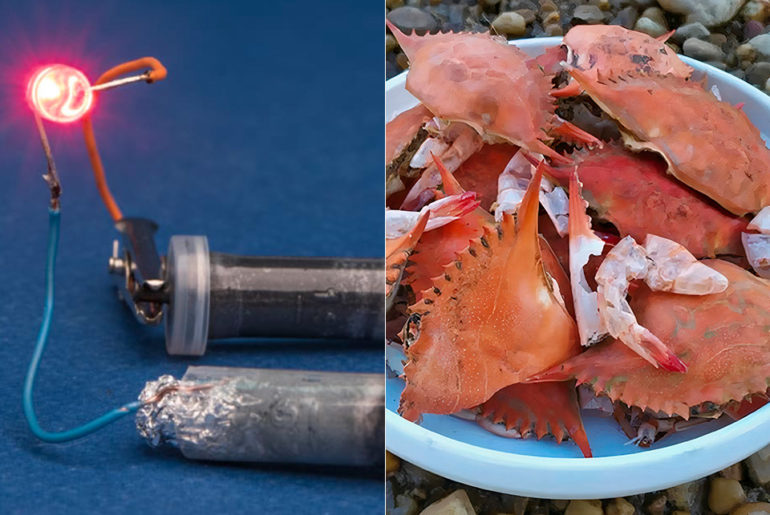
Researchers have been exploring alternatives to the standard lithium-ion battery since their production involves many not so eco-friendly chemicals, and so they turned to crab shells. These new batteries are made from a product derived from crustacean shells capable of storing energy. The shells of crabs, shrimps, lobsters and other crustaceans are made of cells that contain chitin.

Chitin essentially is a polysaccharide that makes their shells hard and resistant, yet typically thrown away as food waste. Using a special chemical process and adding acetic acid aqueous solution allows chitin to be synthesized into a firm gel membrane and used as an electrolyte for a battery. This small crab fossilized in 100-million year old amber may not be the best specimen to use for such an experiment.
We think both biodegradability of material, or environmental impact, and the performance of the batteries are important for a product, which has the potential to be commercialized. The design of new batteries that are respectful of the environment, cheap and producing high discharge capacity, is one of the more important items that must be developed in the coming years,” said Liangbing Hu, the director of the University of Maryland’s Center for Materials Innovation.




